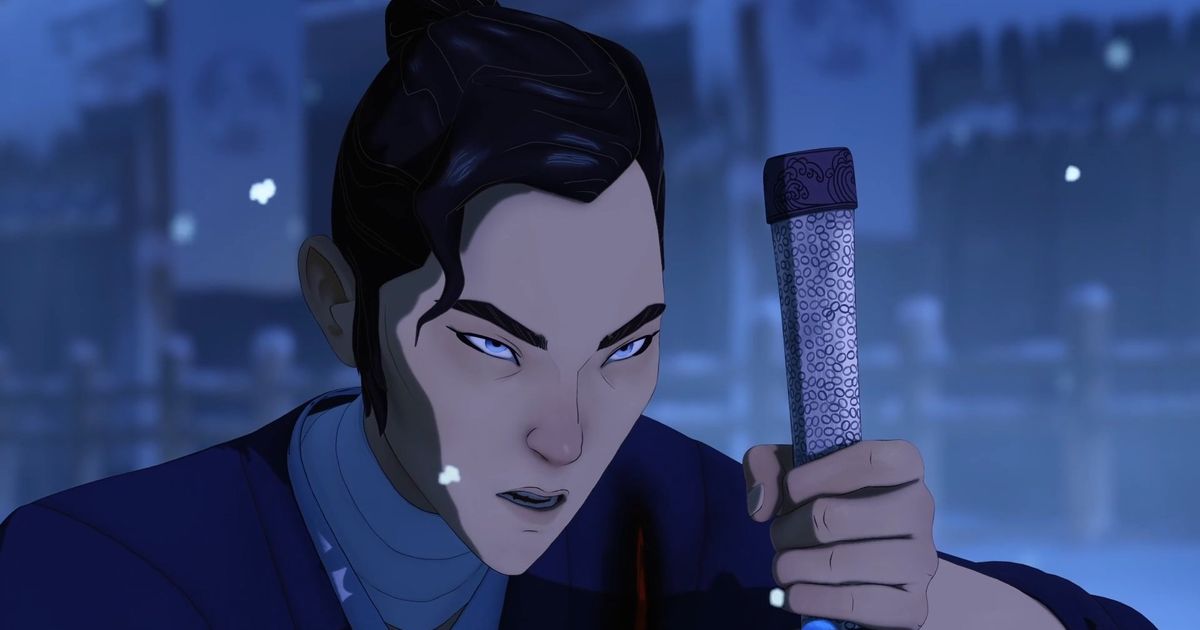While not an anime as such, Blue Eye Samurai is an excellent show for anime fans. Through its protagonist, Mizu, Blue Eye Samurai explores gender and race in ways we have rarely seen in animated shows. Find out more here!
RELATED: LGBTQ Anime on Netflix
How Does Blue Eye Samurai Explore Mizu's Gender?
In Blue Eye Samurai, Mizu's gender is an important plot point due to the story the show tells, and the particularities of the era.
Contemporary media may portray characters that do whatever they put their mind to, regardless of gender, but for characters of historical shows like Mizu, things can be more complicated.
Initially, Mizu's presentation might lead viewers to believe that the character is non-binary.
While this interpretation is plausible, the language to describe such an identity wasn't widely available at the time.
In an interview with The Hollywood Reporter, creators Michael Green and Amber Noizumi mentioned that, since a vocabulary to describe gender-non-conforming identities did not exist at the time, Mizu can be interpreted in more than one way.
"It’s been really heartening and interesting hearing people see the show now thinking about what Mizu might identify as, Green said. "Referring to Mizu as she or they — that’s amazing."
The very act of being a female samurai in 17th-century Japan comes in opposition to all gender norms of the time. In that sense, Mizu operates beyond the gender boundary.
At the same time, Blue Eye Samurai recognizes that women who did conform to traditional gender roles, like Princess Akemi, might have still resisted in their own ways.
This makes the animated series' views on gender all the more nuanced.
Mizu's Shame as a Multiracial Person in 17th-Century Japan
It isn't just Mizu's gender presentation that sets the character apart. The protagonist's titular blue eyes are more than an aesthetic. Blue Eye Samurai explores the shame associated with Mizu's identity.
Mizu was conceived by rape. The animated series focuses on her quest to take revenge against her father, one of the four white men who were in the country at the time.
Japan at the time was very homogenous, to the point that blue-eyed Mizu was viewed as a demon samurai.
At the same time, she wouldn't be able to pass as white; both sides would discriminate against her.
Creators Green and Noizumi are a husband and wife team, and the latter is half-Japanese.
In The Hollywood Reporter interview, the creators mention that they conceived the idea for Blue Eye Samurai when their daughter was born.
Their reaction to their daughter's blue eyes led them to think deeply about biracial identities and the way these are perceived.
Many animated media unfolding in Japan feature anime characters that don't look Japanese, and due to anime's stylization, this is usually an aesthetic that doesn't get explored.
This is severely deconstructed in Blue Eye Samurai whose main character faces discrimination due to her different appearance.
Mizu's identity as a biracial female samurai in the Edo period makes for a fascinating intersectional story.
Discover more of our insights and the latest anime news by following us on X (formerly Twitter) @epicstreamanime!
READ NEXT: The Best Dubbed Anime on Netflix







